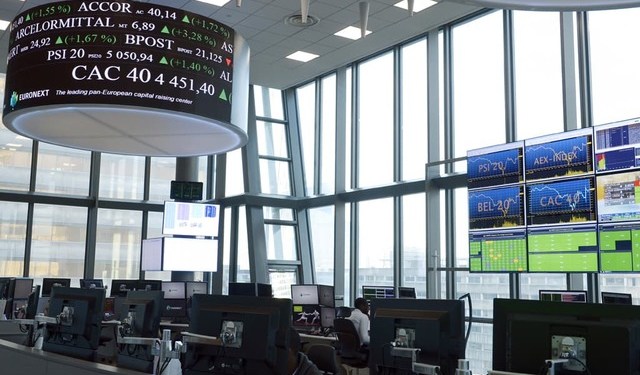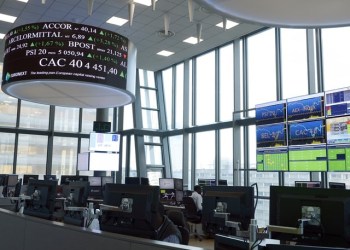NEW YORK: The S&P 500 posted slight gains on Thursday as declines in technology companies and packaged food makers, dragged down by J.M. Smucker’s quarterly report, were offset by rising energy shares.
Brent crude gained more than 1 percent on concerns about a plunge in exports from Venezuela, helping the S&P energy index rise more than 1.1 percent.
Optical stocks and some chipmakers also gained after US Commerce Secretary Wilbur Ross said Washington had reached a deal with China’s No. 2 telecommunications equipment maker ZTE that would allow it to do business again with US suppliers.
Optical component makers Acacia Communications, Oclaro Inc and Lumentum Holdings jumped on the news.
Qualcomm and NXP Semiconductors also rose 2.6 percent and 6.2 percent respectively. A $44 billion acquisition of NXP by Qualcomm is still under review by China’s market regulator, although there have been some signs of progress as China and Washington negotiated on trade in the past month.
“That will be bullish for any of the suppliers to ZTE, but more importantly bullish for any deal stocks waiting for regulatory approval,” said Art Hogan, chief market strategist, B. Riley FBR in New York.
Losses in tech heavyweights such as Facebook, Intel and Apple weighed on the S&P technology index , which fell 0.3 percent.
At 9:52 a.m. ET, the Dow Jones Industrial Average was up 112.42 points, or 0.45 percent, at 25,258.81, the S&P 500 was up 7.13 points, or 0.26 percent, at 2,779.48 and the Nasdaq Composite was up 3.05 points, or 0.04 percent, at 7,692.29.
“We had a significant run up of late and it takes pretty significant catalysts to move us higher,” said Hogan.
Shares in J.M. Smucker fell 6.8 percent after the Folgers coffee maker reported quarterly results and full-year forecast that missed Wall Street estimates.
Other food companies such as Kellogg dropped 0.7 percent and General Mills fell 0.2 percent.
Investors will look to a G7 summit starting in Canada on Friday for more signs on the trade tensions and tit-for-tat tariffs which weakened the stock market through February and March.
The two-day meeting will be the first chance for world leaders to confront Trump in person, since US tariffs on steel and aluminum imports from Canada, Mexico and the European Union were imposed last week.
All six of the other G7 countries – Britain, Canada, France, Germany, Italy and Japan – are now paying the tariffs.
Canada and Mexico have retaliated against a range of US exports and the EU has promised to do so as well.
Advancing issues outnumbered decliners for a 1.75-to-1 ratio on the NYSE and for a 1.48-to-1 ratio on the Nasdaq.
The S&P index recorded 46 new 52-week highs and five new lows, while the Nasdaq recorded 173 new highs and nine new lows.
Source: Brecorder


























